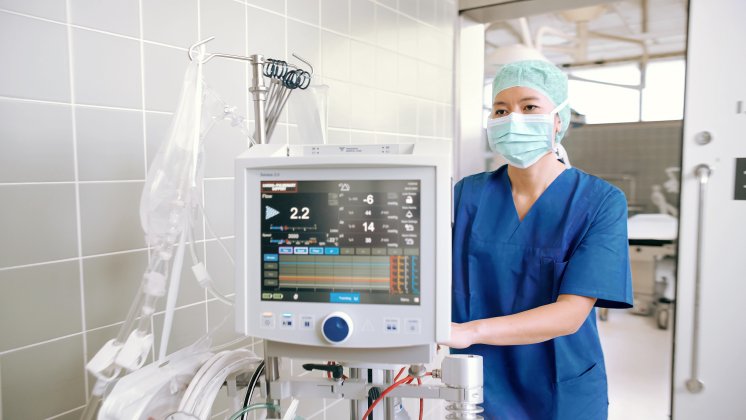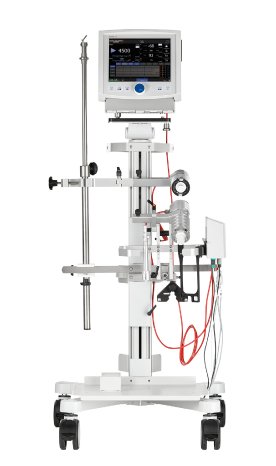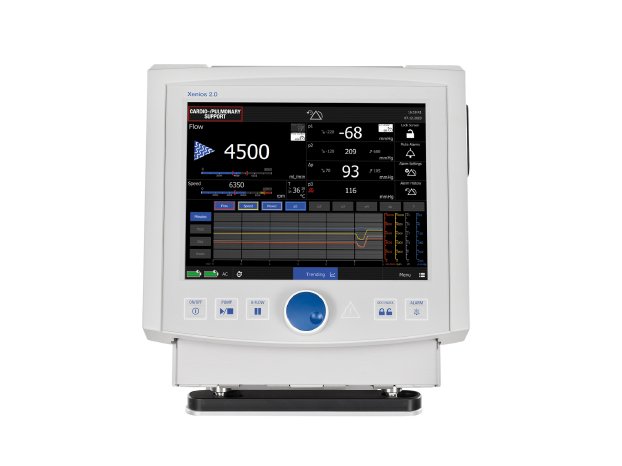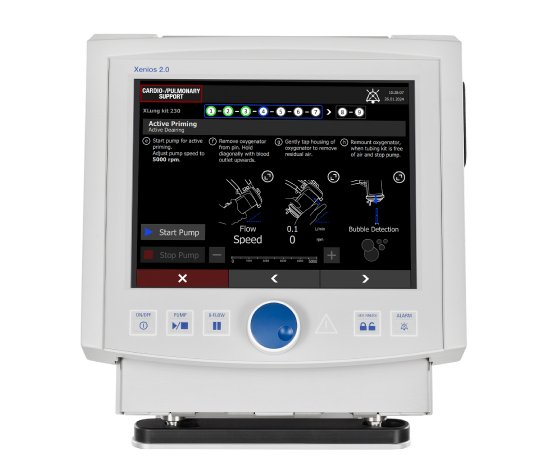Xenios 2.0: Safety – simplicity – connectivity
The new device has been designed with innovative safety features, a simplified guided user interface, and advanced connectivity to support physicians and caregivers during ECLS treatment. Various new technical features were implemented during the development, including a redesigned graphical user interface (GUI). The new GUI supports all relevant handling steps and functions before and during treatment to make it as safe and trouble-free as possible.
Safety. The system includes features such as power consumption monitoring, which can help with circuit handling. The design of the integrated pressure sensors (IPS) eliminates the risk of air aspiration and measures the pressure directly at the tubing kit. Additionally, the intelligent alarm functions offer recommendations for action in the event of certain physiological and technical alarms, ensuring prompt and appropriate responses.
Xenios 2.0 is equipped for various backup scenarios to maintain treatment even in the event of a system failure. Two backup battery packs supply the system with power during a power failure or interruption. A second pump drive can be used if the initial pump drive fails. In case of a technical failure of the operator unit itself, the pump drive and a battery pack can be connected directly to each other.
Simplicity. Comprehensive step-by-step explanations and illustrations during the priming procedure help to avoid user errors, making the system user-friendly. This reduces potential sources of failure that can occur during an ECLS treatment in advance and thus can save time. In addition, Xenios 2.0 supports the learning effort for new personnel so that they are able to prepare a kit for ECLS treatment even in stressful situations.
The trend display allows users to visualize critical parameters and observe how they change over time, providing a clear and continuous overview of the system.
Connectivity. The system supports the simple implementation of standards-based medical data, allowing for flexible integration of machine data into various patient monitoring systems. Medical data is automatically sent to a Patient Data Management System (PDMS) or Electronic Medical Record (EMR), which can significantly reduce the workload for healthcare providers by streamlining documentation and data management processes.
An MDR-approved system available for the European CE market
An approval under the Medical Device Regulation (MDR) is a significantly higher bar than the previous Medical Device Directive (MDD) requirements, with an increased focus on safety, performance, and product lifecycle.
“Based on new regulatory requirements and the need for increased safety standards, the Xenios 2.0 offers enhanced safety features to support physicians and caregivers.”, says Dr. Benjamin Waldmann, CEO of Xenios AG, and adds: “With Xenios 2.0 we are taking the next step towards improved ECLS treatment.”
Fresenius Medical Care received approval from the notified body (CE 0123) at the end of August this year and will soon be able to make the first devices available.
For further information regarding Xenios 2.0 please contact: xenios-sales@freseniusmedicalcare.com
A video about Xenios 2.0 can be found here.





